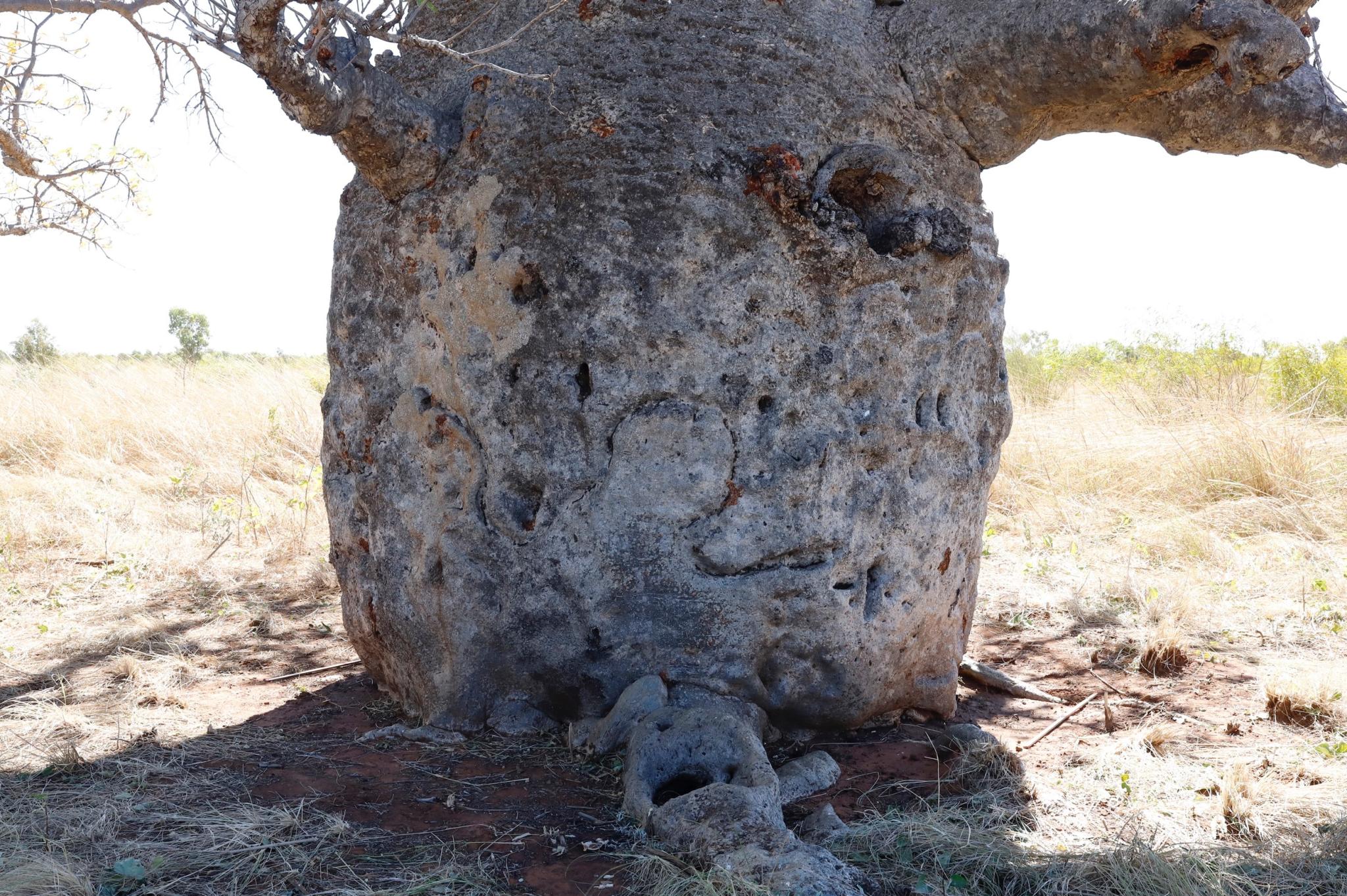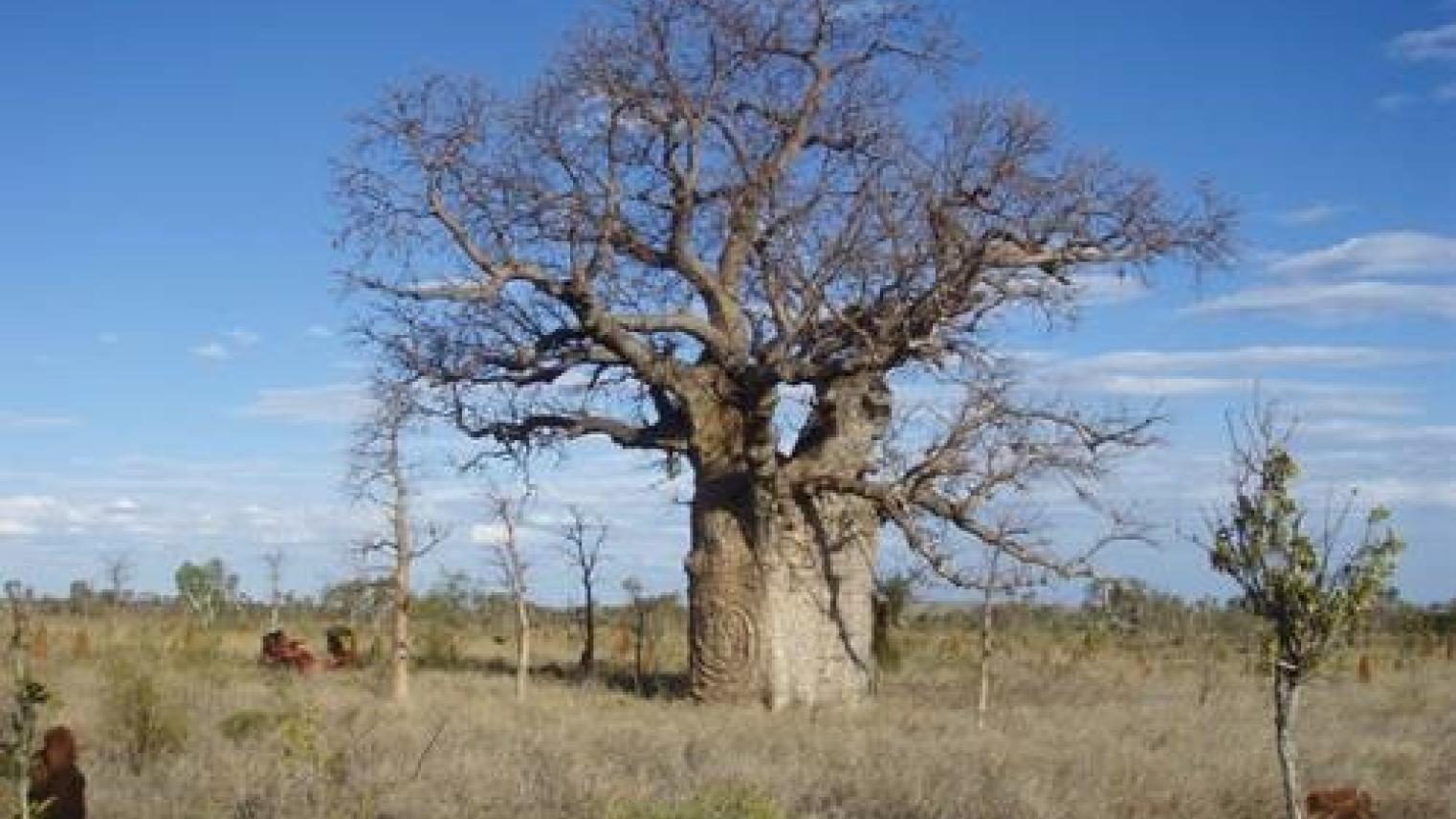The project documents a hitherto poorly recorded form of traditional Indigenous cultural and artistic practice, as well as information about the lives of Indigenous and non-Indigenous people living on missions and pastoral properties prior to and immediately following European Contact.



The significance of the project lies in its ability to record information about the lives of people not captured in other types of historical documents. The project will document these heritage trees using state-of-the-art 3-D photogrammetry to build a baseline record for the future.



Race against time to find ancient Indigenous carvings
Researchers are working with a group of First Nations Australians in a race against time to document ancient art in the bark of Australia’s boab trees in some of the roughest terrain on Earth.